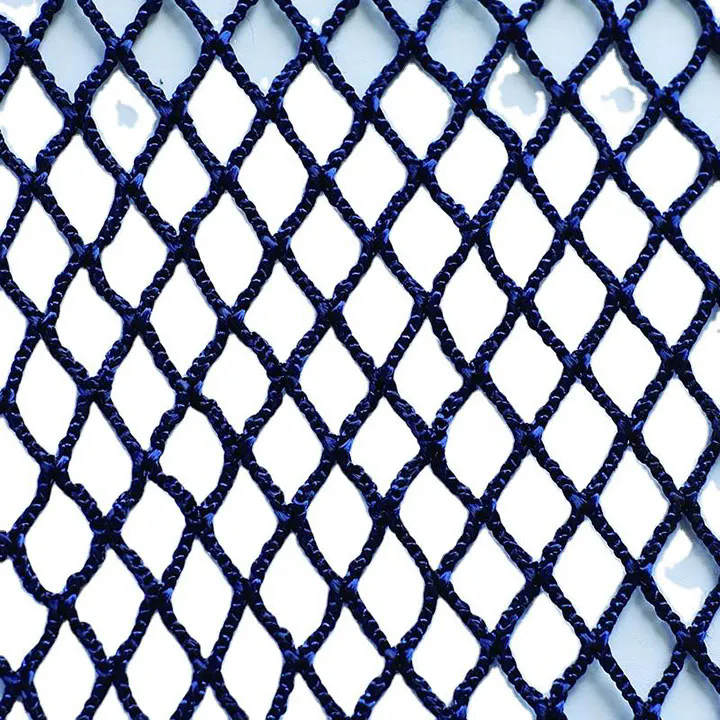Knotless Nets: Frequently Asked Questions and Their Unique Advantages
2024-11-04
Knotless nets are a popular choice in many fields, known for their smooth texture, durability, and versatility. From fishing and sports to agriculture and safety applications, these nets offer advantages over traditional knotted designs. In this Q&A blog, we’ll explore the common questions and benefits associated with knotless nets, helping you understand why they are so widely used.
What is a knotless net, and how does it differ from a knotted net?
A knotless net is constructed without any traditional knots where the threads intersect. Instead, the fibers are either woven or heat-sealed, resulting in a smooth and seamless surface. Unlike knotted nets, which have small knots at every intersection, knotless nets have no protrusions, making them less abrasive. This design improves durability and reduces friction, making knotless nets gentler on objects or organisms they come into contact with.
What materials are commonly used in knotless nets?
Knotless nets are made from high-strength materials like nylon, high-density polyethylene (HDPE), and polyester. These materials offer unique benefits:
- Nylon: Known for its flexibility and strength, nylon is ideal for sports and fishing nets.
- HDPE: Resistant to UV light and moisture, HDPE is well-suited for outdoor and marine use.
- Polyester: With excellent wear and weather resistance, polyester is often used in agriculture and safety applications.
These materials contribute to the knotless net’s durability, flexibility, and ability to withstand diverse environments.
What are the key benefits of using knotless nets?
Knotless nets provide several advantages over their knotted counterparts:
- Gentler on Surfaces: The smooth, knot-free surface minimizes friction and damage, making these nets ideal for delicate uses, like handling fish or protecting crops.
- Higher Durability: Knotless nets experience less wear and tear because there are no knots that could loosen or create weak points.
- Reduced Water and Wind Resistance: Without knots, these nets experience less drag in water or air, which is beneficial for fishing and sports applications.
- Extended Lifespan: Thanks to their durability, knotless nets tend to have a longer lifespan, even in challenging environments.
These benefits make knotless nets a practical choice across industries where durability and surface smoothness are priorities.
In which industries are knotless nets commonly used?
Knotless nets are widely used in several industries:
- Fishing and Aquaculture: Their gentle surface prevents harm to fish, making them ideal for both wild fishing and fish farming.
- Sports: Knotless nets are preferred for soccer, volleyball, and tennis, providing a smoother surface that reduces wear on balls and is safer for players.
- Agriculture: Used to protect crops, knotless nets are gentle on plants and effective at keeping pests away.
- Safety and Construction: Knotless safety nets are used for worker protection on construction sites, as they offer durability and high resistance to environmental factors.
Their versatility and material strength make knotless nets valuable for numerous applications.
Why are knotless nets ideal for the fishing industry?
Knotless nets offer several benefits tailored to fishing and aquaculture:
- Less Damage to Fish: These nets are gentler on fish, reducing the likelihood of injury to scales and fins, which is essential in catch-and-release fishing and aquaculture.
- Lower Drag in Water: Knotless nets create less resistance in water, making it easier to handle and requiring less effort during fishing.
- Saltwater and UV Resistance: Materials like HDPE are often UV- and salt-resistant, enhancing the net’s longevity in marine environments.
These attributes make knotless nets an environmentally friendly and efficient choice for the fishing industry.
Are knotless nets environmentally friendly?
Yes, knotless nets can be more environmentally friendly for a few reasons:
- Longevity: Knotless nets have a longer lifespan, reducing the frequency of replacement and waste.
- Gentleness on Wildlife: With a smoother surface, these nets are less likely to harm fish or other marine life, making them a safer option for the environment.
- Recyclable Materials: Many knotless nets are made from recyclable materials like HDPE and nylon, promoting a more sustainable lifecycle when disposed of properly.
Choosing knotless nets can contribute to sustainability, especially when used in industries focused on minimizing environmental impact.
How do I care for and maintain a knotless net?
Proper maintenance can extend the life of a knotless net:
- Regular Cleaning: Rinse the net with fresh water, especially after exposure to saltwater, to prevent material degradation.
- Inspect for Wear: Regularly check the net for signs of fraying or damage, particularly in high-stress areas.
- Avoid Sharp Objects: Keep the net away from sharp or abrasive surfaces that might tear the material.
- Store in a Cool, Dry Place: When not in use, store the net out of direct sunlight to prevent UV damage, unless it’s treated for UV resistance.
By following these steps, you can help ensure that your knotless net remains durable and effective.
Are there any disadvantages to using knotless nets?
While knotless nets have many advantages, there are a few considerations:
- Higher Initial Cost: Knotless nets are often more expensive to manufacture due to the complex weaving process, resulting in a higher upfront cost.
- Repair Challenges: Repairing a knotless net can be more challenging than a knotted net, as the woven design lacks individual knots that could be easily retied.
- UV and Environmental Exposure: Some materials may degrade faster in outdoor conditions if not treated for UV protection.
Despite these factors, the durability and performance of knotless nets generally justify the investment for most users.
How do I choose the right knotless net for my needs?
To select the best knotless net, consider the following factors:
- Material Choice: Select a material suited to the environment. HDPE and nylon are excellent for outdoor use, while polyester works well in agricultural settings.
- Mesh Size: Choose an appropriate mesh size based on your purpose. Smaller mesh sizes are ideal for trapping smaller objects, while larger mesh sizes are better for larger items.
- Strength Requirements: Consider the weight and load requirements, especially for safety applications or when used for heavy-duty tasks.
- UV Resistance: If your net will be used outdoors, UV-resistant options are recommended to prevent degradation.
These considerations will help you find a knotless net tailored to your specific needs.
What are some innovations or trends in knotless net technology?
As technology advances, knotless nets are becoming more specialized:
- Biodegradable Materials: Some manufacturers are developing biodegradable nets to reduce waste, especially in fishing and agriculture.
- Enhanced UV Protection: Improved UV-resistant treatments allow nets to last longer in direct sunlight.
- Smart Netting: Emerging smart technology includes sensors in nets to monitor conditions such as net tension, wear, and environmental exposure, especially useful in safety applications.
These innovations aim to make knotless nets even more versatile, eco-friendly, and effective in various industries.
In Summary:
Knotless nets provide a valuable alternative to traditional knotted designs by offering durability, reduced drag, and a gentler surface for delicate applications. Used across industries from fishing to agriculture and sports, these nets help protect equipment, minimize environmental impact, and enhance safety. By selecting the right material and properly maintaining your net, you can enjoy the many benefits of knotless nets for years to come.



